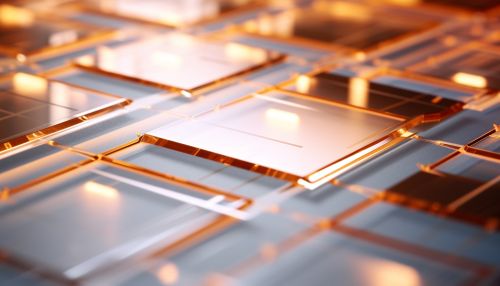Piezoelectric Materials in Energy Harvesting
Introduction
Piezoelectric materials are a class of materials that exhibit the piezoelectric effect, which is the ability to generate an electric charge in response to applied mechanical stress. This unique property has made them a subject of interest in the field of energy harvesting, where they can be used to convert mechanical energy, such as vibrations or pressure changes, into electrical energy.


Piezoelectric Effect
The piezoelectric effect was first discovered in 1880 by the Curie brothers, Pierre and Jacques. They found that when pressure is applied to certain materials, a voltage is produced. This phenomenon is known as the direct piezoelectric effect. Conversely, when an electric field is applied to these materials, they undergo a mechanical deformation, a phenomenon known as the inverse piezoelectric effect.
The piezoelectric effect is a result of the asymmetrical arrangement of atoms in the crystal lattice of these materials. When a mechanical force is applied, the crystal lattice deforms, causing a shift in the charge distribution and thus generating an electric field.
Piezoelectric Materials
Piezoelectric materials can be broadly classified into two categories: natural and synthetic. Natural piezoelectric materials include quartz, topaz, cane sugar, and rochelle salt. Synthetic materials include ceramics like lead zirconate titanate (PZT), polymers like polyvinylidene fluoride (PVDF), and composites of these materials.
Quartz
Quartz is a naturally occurring piezoelectric material that has been used in various applications for its piezoelectric properties. It is highly stable and resistant to both high temperatures and chemical corrosion, making it suitable for use in harsh environments.
Lead Zirconate Titanate (PZT)
Lead zirconate titanate (PZT) is a synthetic piezoelectric ceramic that exhibits a high piezoelectric coefficient, making it one of the most commonly used piezoelectric materials. It is used in a wide range of applications, from medical ultrasound imaging to fuel injectors in automobiles.
Polyvinylidene Fluoride (PVDF)
Polyvinylidene fluoride (PVDF) is a piezoelectric polymer that is flexible and lightweight, making it suitable for applications where flexibility is required. It is used in applications such as pressure sensors and microphones.
Energy Harvesting
Energy harvesting is the process of capturing and storing energy from external sources, such as solar power, thermal energy, wind energy, or kinetic energy. In the case of piezoelectric materials, the energy source is mechanical energy, which can come from a variety of sources, such as vibrations, pressure changes, or sound waves.
Piezoelectric energy harvesting works by converting the mechanical energy into electrical energy through the piezoelectric effect. When a piezoelectric material is subjected to mechanical stress, it generates an electric charge. This charge can then be collected and stored for later use.
Piezoelectric Energy Harvesting Applications
Piezoelectric materials have been used in a variety of energy harvesting applications, ranging from small-scale devices like watches and sensors to large-scale applications like power generation in industrial settings.
Watches
Some watches use piezoelectric energy harvesting to power the watch. The mechanical energy from the movement of the wearer's wrist is converted into electrical energy, which is then used to power the watch.
Sensors
Piezoelectric materials are often used in sensors for energy harvesting. The mechanical energy from the environment, such as vibrations or pressure changes, is converted into electrical energy, which is then used to power the sensor.
Industrial Power Generation
In industrial settings, piezoelectric materials can be used to harvest energy from vibrations or pressure changes. This energy can then be used to power equipment or stored for later use.
Conclusion
Piezoelectric materials have a unique ability to convert mechanical energy into electrical energy, making them a valuable tool in the field of energy harvesting. From small-scale applications like watches and sensors to large-scale industrial power generation, piezoelectric materials are playing a crucial role in harnessing energy from our environment.
